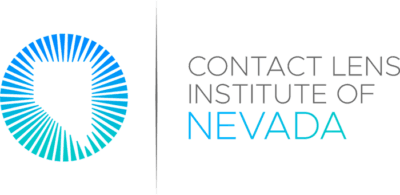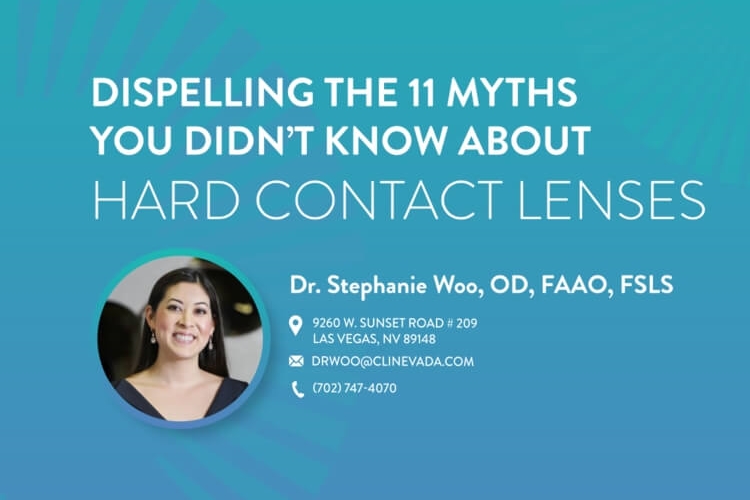Scleral contact lenses are used in patients with irregular corneas, corneal transplants, and with other ocular surface abnormalities like a bleb from glaucoma surgery. In many cases, a standard scleral contact lens will be sufficient to vault over any irregularities and correct vision.
However, if there are multiple complications in one eye or the eye is particularly irregular, a scleral lens can be customized using a molding technique to model the lens after the surface of the eye. This technique uses the EyePrint system to create the mold that is then used to produce the custom scleral contact lens.
Causes of Irregular Corneas
An irregular cornea is any cornea that is not evenly round or has asymmetry between two halves of the cornea.
In most cases, an irregular cornea is due to a congenital or inherited eye condition. The most prevalent condition of this type is keratoconus.
Other corneal dystrophies which can cause irregularities include pellucid marginal degeneration and keratoglobus.
Causes for Needing a Corneal Transplant
A corneal transplant is considered the final treatment option after all other options have been exhausted without success.
A variety of eye conditions can require a corneal transplant in the advanced stages of the disease. Among these conditions are Fuch’s corneal dystrophy, keratoconus, a corneal scar, or epithelial basement membrane dystrophy.
Following a corneal transplant, the cornea will have an irregular pattern on the surface and is treated similarly to other irregular corneas.
EyePrint Technology for Patient with Corneal Transplant and Glaucoma
Some patients have multiple eye issues happening at the same time, which can create some challenges for eye doctors. In our clinic, we have some patients that require scleral lenses who also have glaucoma. A large majority of these patients have a corneal transplant AND glaucoma surgery.
Scleral lenses have given us the ability to transform vision for corneal transplant patients. However, when a patient also has glaucoma, it can become much more complicated.
In this particular case, our patient has a glaucoma surgery called a bleb, which you can see at the 1:00 position. This creates a blister-like bump on the white part of the eye, which makes a traditional scleral lens nearly impossible to fit. Luckily, for these patients, we have an amazing technology called the EyePrint.
In the office, we take an impression of the eye surface (similar to the impression material used at the dentist office to take molds of your teeth). Then, we send the impression to the lab and they use a 3D scanner to evaluate the exact curvature of the eye.
In this video, you can see the amazing technology used to evaluate the eye in a 3 dimensional view. This technology uses over 3 million data points. This results in a perfectly customized lens for a patient. The lens is then shipped to our office, and we insert the lens into the patient's eye to assess the fit and vision.
This patient can see 20/30 with her custom EyePrint Prosthetic, which is life changing for her! We are so lucky to be able to offer such amazing technology to our patients.
Surgical Causes of Irregular Cornea
In addition to natural dystrophies and corneal transplants, an irregular cornea can be a result of another eye surgery.
The most prevalent of these surgeries is a glaucoma surgery called a trabeculoplasty. The trabeculoplasty leaves a bubble or bleb that is raised and can distort the front surface of the cornea.
Molding for Scleral Lenses
If traditional scleral contact lenses are unable to correct the vision or be worn with comfort, custom molded contact lenses are an option.
These types of scleral contact lenses require a direct mold of the cornea and the front of the eye.
With this mold, the scleral contact lens is then crafted to align perfectly with any irregularities on the cornea.
To create this type of mold, an EyePrint mold device is used and placed directly on the eye to create the outline for the mold.
This mold is then sent to the lab where a custom lens is created.
Benefits of EyePrint Custom Scleral Lenses
For individuals who are consistently unable to find scleral contact lenses or other types of contact lenses which can correct vision and remain comfortable throughout the day, a custom molded lens like the EyePrint scleral lens is a great option.
These lenses have the most customization available and can be fine-tuned to correct both large and small corneal irregularities.
The custom scleral lenses can also account for multiple irregularities in one eye – for instance an eye that has a glaucoma bleb and has also had a corneal transplant for keratoconus.


